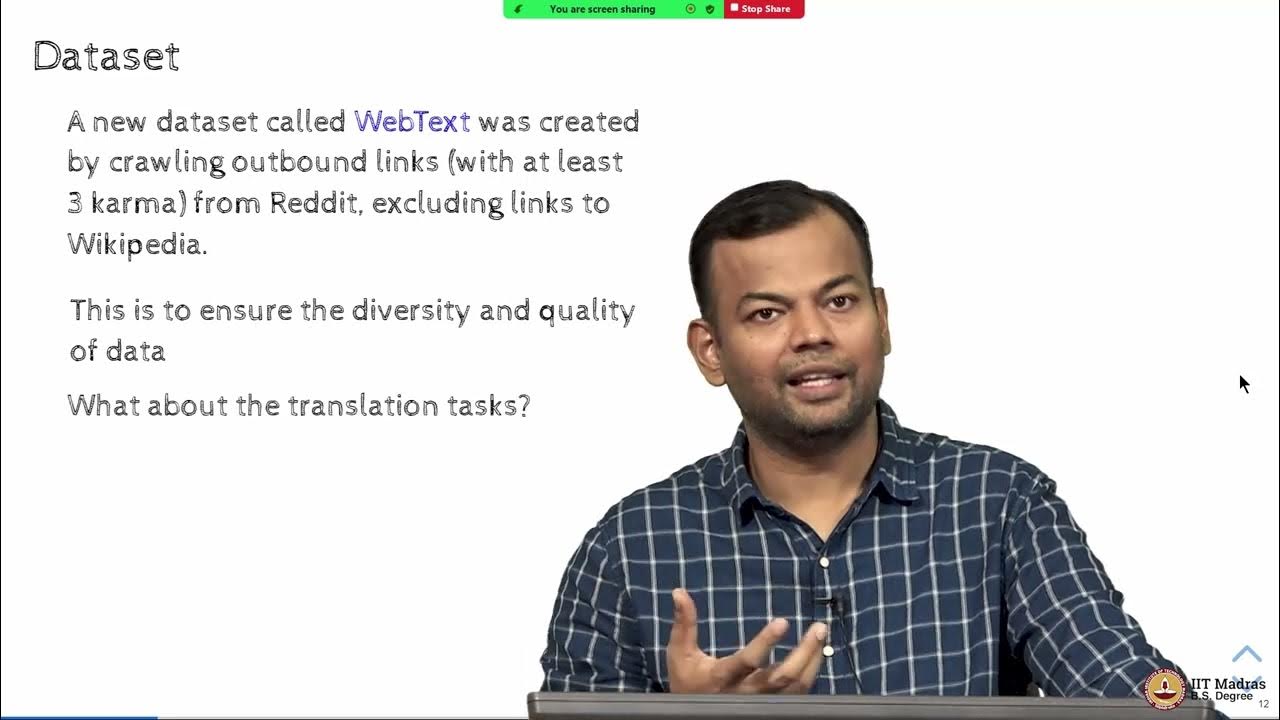Foundation models and the next era of AI
Summary
TLDRThe video discusses recent advances in AI, focusing on large language models like GPT-3 and ClaudeAI's ChatGPT. It outlines key innovations enabling progress: Transformer architectures, massive scale, and few-shot in-context learning. Models now solve complex benchmarks rapidly and power products like GitHub Copilot. But open challenges remain around trust, safety, personalization and more. We are still early in realizing AI's full potential; more accelerated progress lies ahead as models integrate with search, tools and experiences - creating ample research opportunities.
Takeaways
- 😲 AI models have made huge advances in generative capabilities recently, with high quality text, image, video and code generation
- 😎 Transformers have come to dominate much of AI, with their efficiency, scalability and attention mechanism
- 🚀 Scale of models and data keeps increasing, revealing powerful 'emerging capabilities' at critical mass
- 💡 In-context learning allows models to perform new tasks well with no gradient updates, just prompts
- 👍 Chain of Thought prompting guides models to reason step-by-step, greatly improving performance
- 📈 Benchmarks are being solved rapidly, requiring constant refresh and expansion to track progress
- 🤖 Large language models integrated into products are transforming user experiences e.g. GitHub Copilot
- 🔎 Integrating LLMs with search and other tools has huge potential but also poses big challenges
- ☁️ We're still at the very start of realizing AI's capabilities - more advances coming quickly!
- 😊 AI progress is accelerating and affecting everyday products - exciting times ahead!
Q & A
What architectural innovation allowed AI models to achieve superior performance on perception tasks?
-The Transformer architecture, which relies on an attention mechanism to model interdependence between different components in the input and output.
How did the introduction of in-context learning change the way AI models can be applied to new tasks?
-In-context learning allows models to perform new tasks directly from pretrained versions, without additional training data or tuning. This expands the range of possible applications and reduces the effort to deploy models on new tasks.
What training innovations were introduced in ChatGPT compared to previous self-supervised models?
-ChatGPT introduced instruction tuning on human-generated prompt-response examples and reinforcement learning from human preferences over model responses.
Why is benchmarking progress in AI becoming increasingly challenging?
-Benchmarks are being solved at an accelerating pace by advancing models, often within months or even weeks of release, limiting their usefulness for measuring ongoing progress.
How does GitHub Copilot demonstrate the rapid transition of AI from research to product?
-GitHub launched Copilot, which assists developers by generating code, shortly after the underlying AI model was created. Studies show it makes developers 55% more productive on coding tasks.
What are some limitations of language models that can be addressed by connecting them with search engines or other external tools?
-Language models have limitations relating to reliability, factual correctness, access to recent information, provenance tracking, etc. Connecting them to search engines and knowledge bases can provide missing capabilities.
What user experience challenges are introduced when language models are integrated into existing products like search engines?
-Challenges include revisiting assumptions about metrics, evaluation, personalization, user satisfaction, intended usage patterns, unintended behavior changes, and how to close feedback loops.
What evidence suggests we are still in the early stages of realizing AI's capabilities?
-The rapid pace of recent innovations, waves of new applications to transform existing products, and many remaining open challenges around aspects like safety and reliability indicate the technology still has far to progress.
How did training language models jointly on text and code give better performance?
-Training on code appeared to help ground models' reasoning and understanding of structured relationships between elements, transfering benefits to other language tasks.
What techniques have researchers proposed for further improvements by training AI systems on human feedback?
-Ideas include prompt-based training, preference learning over model responses, and reinforcement learning from human judgments.
Outlines

This section is available to paid users only. Please upgrade to access this part.
Upgrade NowMindmap

This section is available to paid users only. Please upgrade to access this part.
Upgrade NowKeywords

This section is available to paid users only. Please upgrade to access this part.
Upgrade NowHighlights

This section is available to paid users only. Please upgrade to access this part.
Upgrade NowTranscripts

This section is available to paid users only. Please upgrade to access this part.
Upgrade Now5.0 / 5 (0 votes)





